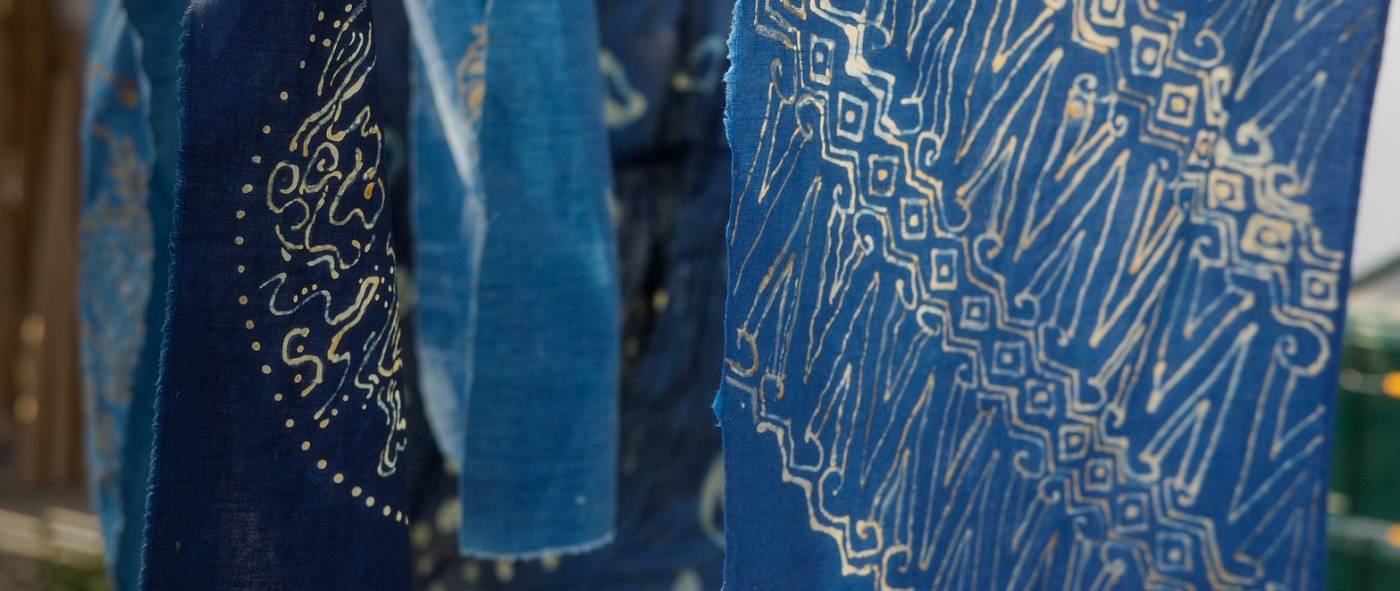
Harvesting Hickory Down South
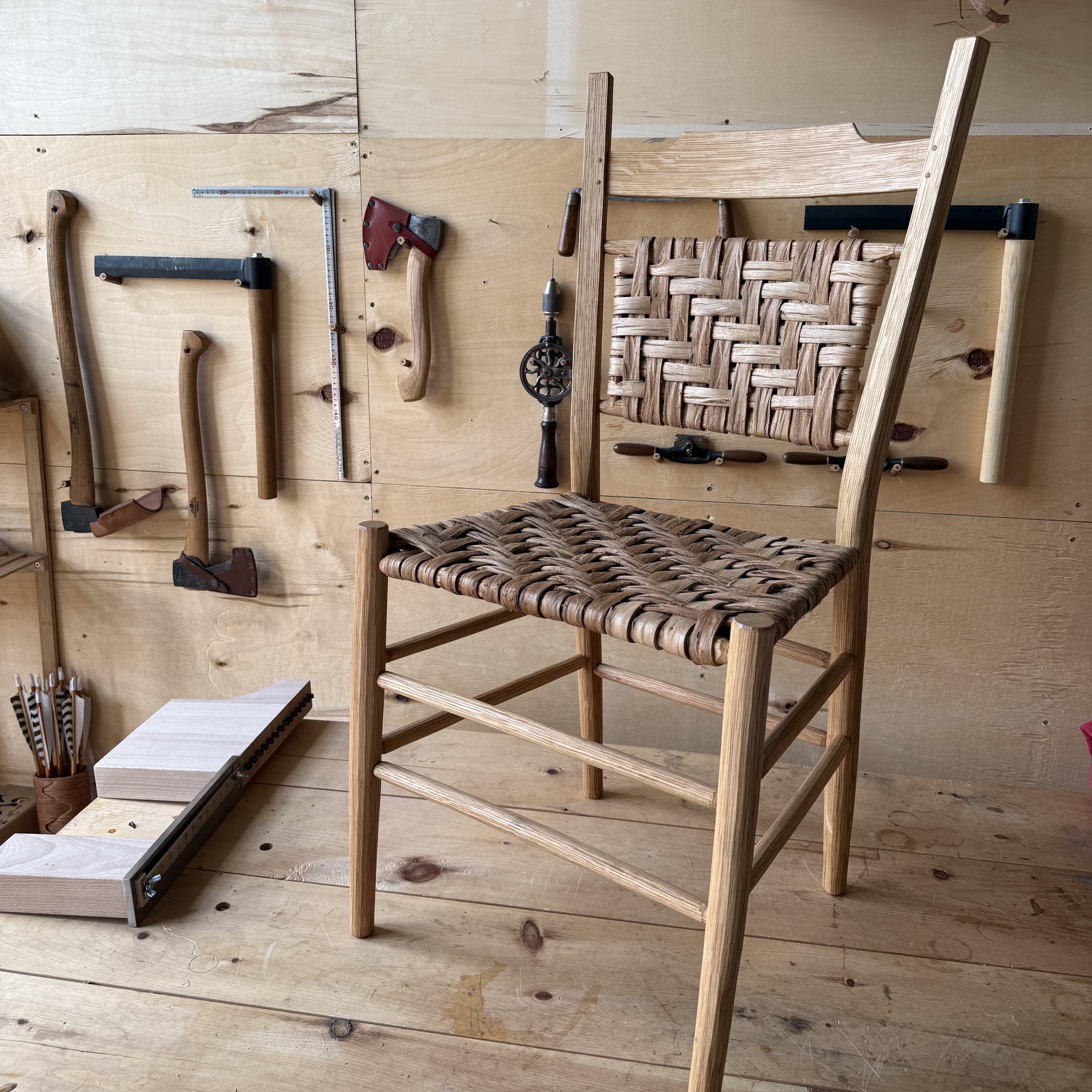
Hickory bark is not easily purchased, so acquiring it often means venturing out to the woods. In this blog post, Resident Artisan Gabe Strand writes about harvesting hickory bark with friends in Central Appalachia.
It was June, and the North Shore summer was coming on a little slow for my taste. All winter, I had been scheming to visit Southern forests come spring with a plan to harvest hickory bark, a material I use to weave the seats in my ladderback chairs. I had been talking for months with friends in Berea, KY and Fayetteville, AR about scouting woodlots and cutting hickories with the intent of harvesting enough bark to sell some to other chairmakers this summer.
Hickory bark is not easily purchased. Instead, it requires networking with loggers and landowners, spending long hours in the woods, and expending a significant amount of physical effort to collect enough of the resource to be useful for a craft like seat weaving or basketmaking. And the work needs doing prior to Summer Solstice, when the bark is slipping. So the day after returning from a short shoulder season Boundary Waters canoe trip with some North House interns and fellow Resident Artisan Ty Shaeffer, I loaded up my truck with a few harvesting tools, camping gear, and my dog Tilly, and started the long drive south.
I ended up spending about 3 weeks in Central Appalachia and the Ozarks, and most days were like the one that I’ll describe here. I had planned to meet up with Micah White, a sheep shearer and white oak basketmaker who lives with his partner Candace south of Berea, KY. Micah knew a landowner who agreed to let us harvest hickory and white oak on land that was slated to be cut. Cutting larger trees would allow the smaller saplings more sunlight, providing quality timber in the future. I drove out to the land with Ty and Tilly. Micah and Candace were waiting for us, and we loaded them along with their gear in the bed of the 4 wheel drive. We continued up numerous jeep tracks and logging roads, fording creeks and gullies to a spot Micah had scouted and identified a few choice hickories earlier that week.
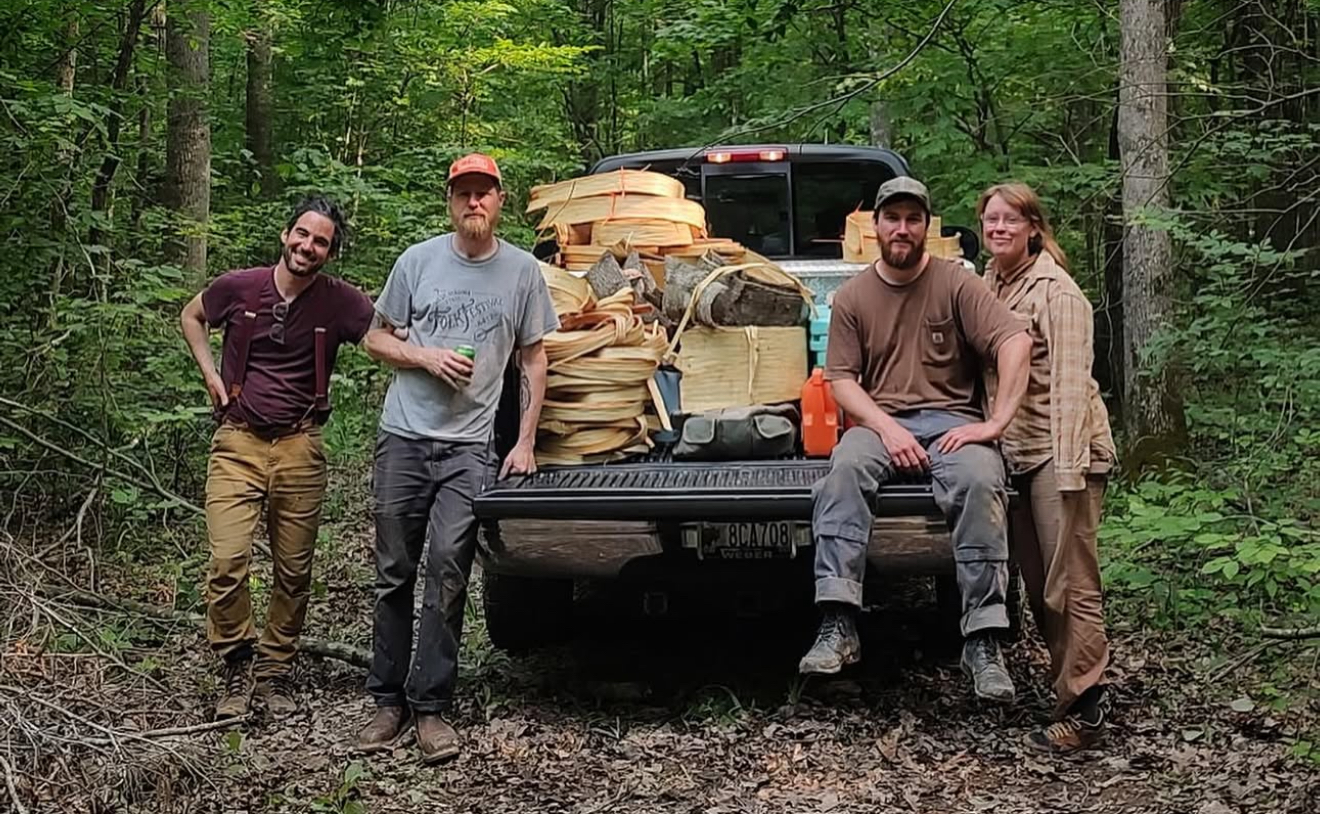
For harvesting quality bark, not any hickory will do. Too big, and it’s hard to drop safely, hard to roll, and the bark may be too thick. You can’t get greedy. We were seeking a candidate no bigger than 10” across, with smooth bark and no branches for as far up the trunk as possible. That tends to be 20-30 feet in Central Appalachian hickory woods, where trees grow straight and tall to reach the sunlight at the top of the thick canopy above faster grown maples and poplars. Even if the log is “slick” as foresters say, it may be that a sapsucker got there first, its feast resulting in a ring of holes around the trunk every few feet.
We found two trees that looked good, and Micah was able to drop them with his chainsaw right across the road so they sat up off the ground as we worked them. The first log was about 20’ long. Using a drawknife, I started to shave off the rough outer bark, revealing the buttery, tan inner bark. Working in about a 4” swath, we shaved the outer bark the entire length of the log in teams, one person starting at the base, the other at the top, working towards one another while straddling and scooting up the log. This is a good way to ruin a pair of Carhartts.
Once a lane of outer bark was removed, I scored a line from one end of the log to the other, trying to cut as straight as possible through the leathery inner bark. Then, a second line is scored 3-4 inches away from the first, defining the first strip of bark to be peeled. Prying the inner bark up from one end, we easily slipped the layer of bark off the log, revealing the slick log underneath, slimy with sap. Pealing the bark away in a long strip is always satisfying and a bit awe-inspiring. The long coil is tied up and set aside to be carried out to the truck. The log is rolled an 1/8th of a turn with a peavey and stabilized with a wedge so it won’t roll back, and the process is repeated.
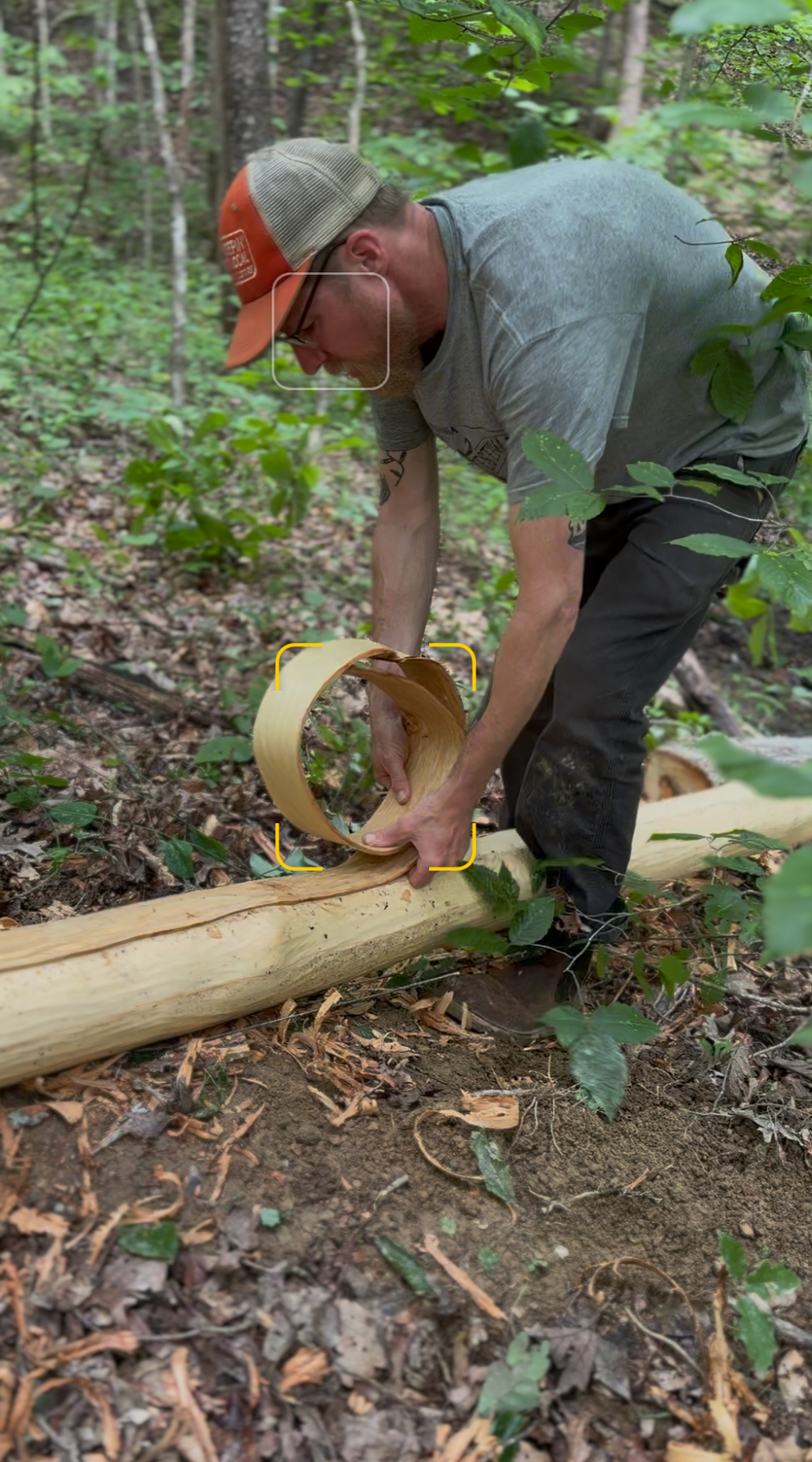
That day I remember it was hot, but not in the woods, where a breeze ran up the creek alongside the road. I remember singing ballads to pass the time, laughing and chatting with Candace as we worked our way around the log. Sometimes working by myself while Tilly napped against the stump we had cut. That day we were visited by a frog, a salamander, and likely many other critters that went unnoticed. The landowner visited too and brought his sister, clearly proud that such uncommon activities were taking place in his woods. Over time, a stack of bark coils steadily grew. Bug bites rose on reddened skin, and ticks quietly snuck their way into socks and other unseen places. We bucked up the naked logs to clear the road, and left them to be cut for firewood. Later in the afternoon, a wood thrush began its lonesome song, a sign that the day is winding down in the Appalachian woods.
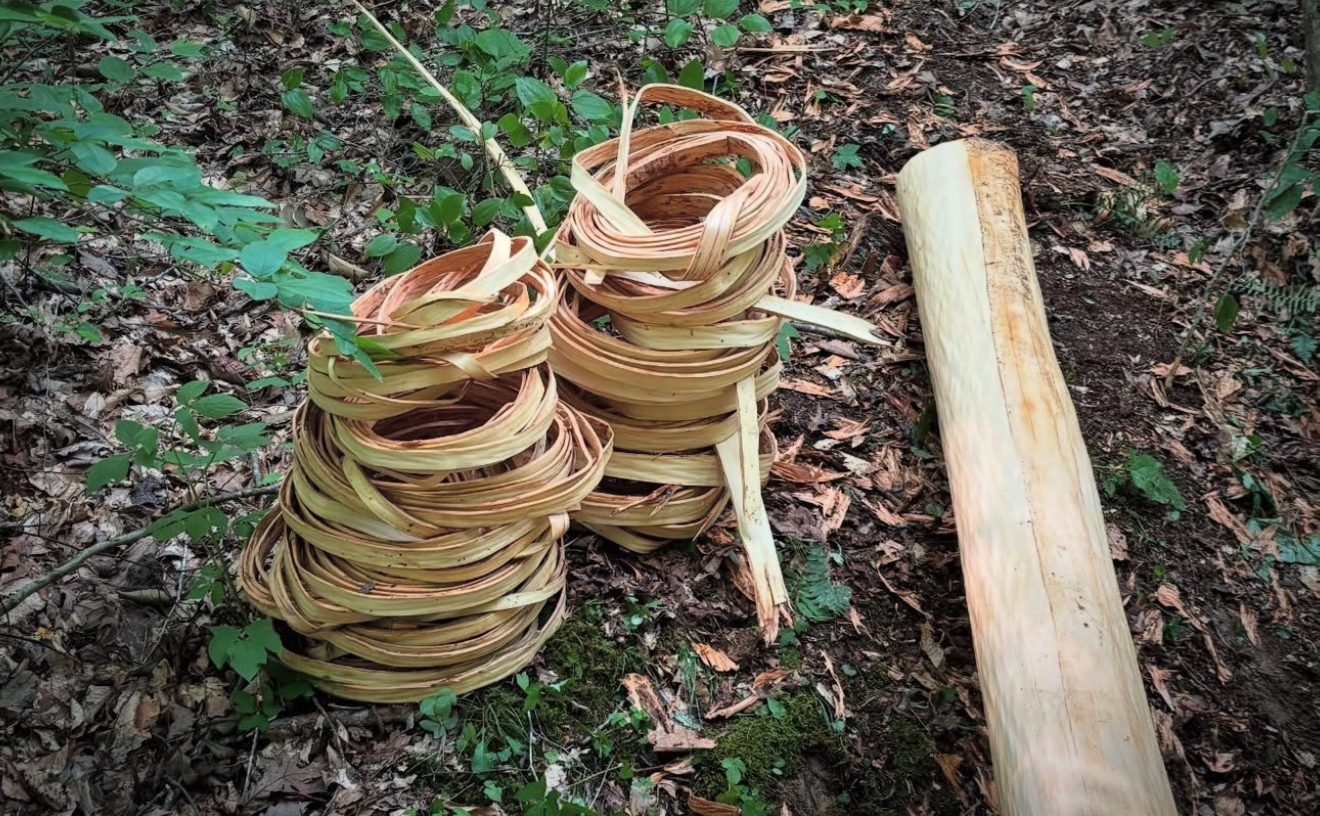
Late in the day, the truck loaded high with our bark coils, gear, and passengers, we bounced back over the creeks and hollows out to the main trunk road. Such work should be exhausting, but it is not a typical exhaustion. It feels more like physical effort connecting a whole biotic community, a network of soil, critters, and plants that have contributed their own efforts to this resource being available.
I’ve started to call days like this “woods work,” a type of craft work qualitatively distinct from work I do at the bench or sketchbook. It’s the work of connecting with the resource by meeting the material at its source to learn who it is and where it spent its time before I came along to transform it into something new.
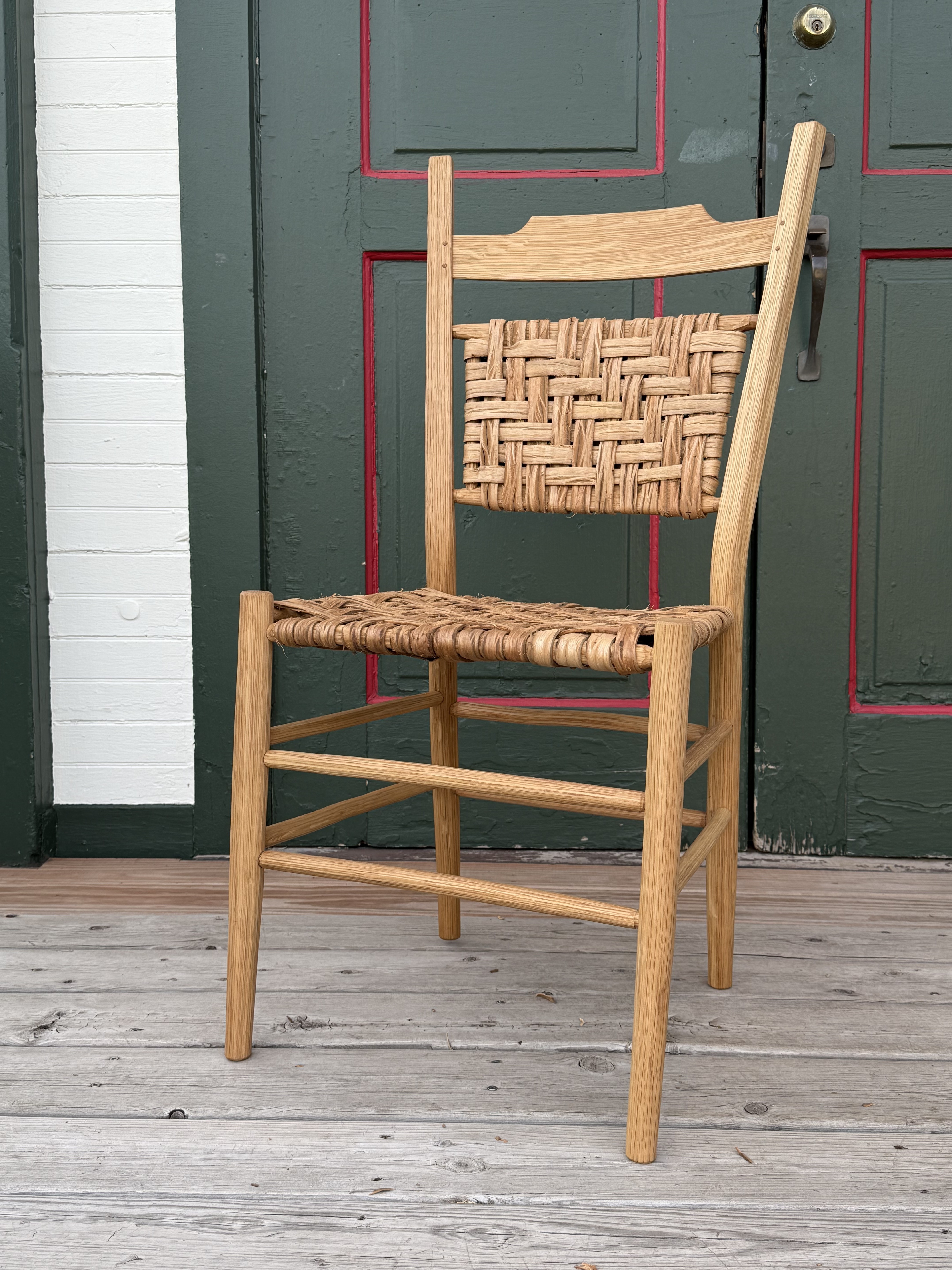
A few weeks later and back in Grand Marais, I cut the wide coils into narrow strips (with help from Ty’s fancy leather cutter). I rehydrated a few coils of bark and wove it onto the frame of a new chair I built, the design inspired by Kentucky chairmaker Terry Ratliff. Sitting in it now, I secretly remember back to that wood thrush song, to my filthy hands and Carhartts, to Tilly sniffing at a toad, and to the sound the tree made as it fell through the canopy.